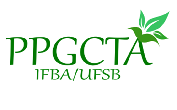Banca de DEFESA: ISABELA CORDEIRO GUEDES QUEIROGA
Uma banca de DEFESA de MESTRADO foi cadastrada pelo programa.DISCENTE : ISABELA CORDEIRO GUEDES QUEIROGA
DATA : 26/07/2021
HORA: 14:00
LOCAL: ambiente virtual (meet)
TÍTULO:
Ethnobotanical and Floristic Survey of Oil Plants from the Atlantic Forest of Costa do Descobrimento.
PALAVRAS-CHAVES:
Costa do Descobrimento, Indigenous and Rural Communities, Atlantic Forest, Flora, Bibliometry.
PÁGINAS: 102
GRANDE ÁREA: Outra
ÁREA: Ciências Ambientais
RESUMO:
Ethnobotany is a science that seeks to rescue the relationship of affinity between human beings and the plants of a community. Another point in conjunction with ethnobotany is the collection of plants of interest, being carried out through floristic surveys. It proposes the use of floristic research through the collection of plant species present in the study site, in order to articulate plans for conservation, preservation and even sustainable extraction. Considering the environmental resources and social arrangements of Costa do Descobrimento, this proposal is made. Thus, the objective of the present work was to carry out an ethnobotanical survey of oil species from the Pataxó da Jaqueira Reserve located in the city of Porto Seguro - BA, as well as to carry out a floristic survey of these species in this same area. and also in the rural community of Fazenda Mutum / Sítio Esperança, located in the municipality of Eunápolis - BA, promoting the possibility of income generation and diversification for the populations involved, with rational use of the natural resources present in these areas. This work was divided into chapters. The first chapter presents a bibliometric study of ethnobotanical works in Brazil based on scientific articles published from 2010 to 2020, in order to provide a theoretical contribution to scientific production, which can assist in understanding new topics in this area, and research that corroborate with the conservation of ethno-knowledge. The methodology of this study consisted of surveying articles published in the Scopus and Web of Science databases. This work was divided into two sections, where Section I presents indicators and descriptive statistics, which summarize and provide an overview of the work. Section II aimed to categorize the articles extracted from the databases. Each article was analyzed, identified and categorized in: regions of the country; biomes where the study was conducted; Social groups involved in the studies; and Purpose of Ethnobotanical Research. In the analysis by categories, it was found that the Northeast region concentrates the largest number of works carried out. Together, they also demonstrated the lack of work in regions such as the Midwest and South of the country. The Atlantic Forest has been the most studied biome in recent years in Brazilian research. Medicinal plants have been shown to be at the center of ethnobotanical research in recent years. The second chapter deals with the ethnobotanical survey of oil species in the Pataxó da Jaqueira Reserve. To carry out this work, 12 interviews were conducted with members of the communities, using a form to collect data on the species of oilseed plants. These forms were previously prepared with open and closed questions, later transcribed and measured. The results showed a rich diversity of species and different uses. Among them is Amescla, widely used for resin extraction, in rituals and in the treatment of various diseases. The third chapter of this work aimed to carry out the Floristic Survey of the oleaginous species that occur in areas of Atlantic Forest of the Pataxó da Jaqueira Indigenous Reserve. Botanical collections were made in the area with the participation of Reserve residents. The collected vegetable material was dehydrated and pressed. The identification of specimens was carried out by means of specialized literature, by comparison with exsiccates from Herbariums of institutions such as UESC through consultations with specialists. Among the species collected and identified are: Árvore do Sangue Vermelho (Pterocarpus rohrii Vahl); Cupion (Guianense Vismia (Alblet) Choisy); Baba de Boi (Cordia); Piaçava (Attalea funifera Mart.); Licuri (Syagrus coronata Mart.); Canela de velho (Miconia albicans (Sw.) Triana); Amescla Mirim (Protium heptaphyllum (Aubl.) Marchand); Itapororoca -Mangue Branco (Clusia nemorosa G. W. Meyer). In this stage, a review of two important species in the region is also presented. A species relevant to the Pataxó da Jaqueira Reserve and a species to the Mutum Farm / Sítio Esperança, which has potential areas of Atlantic Forest, where botanical collections were carried out.
MEMBROS DA BANCA:
Presidente - 006.319.425-21 - THYANE VIANA DA CRUZ - IFBA
Interno - 971.189.235-91 - LUCIANO DA SILVA LIMA - IFBA
Externo à Instituição - ANDRÉ BURIGO LEITE - IFBA
Externa à Instituição - FABIANA ZANELATO BERTOLDE - IFBA



